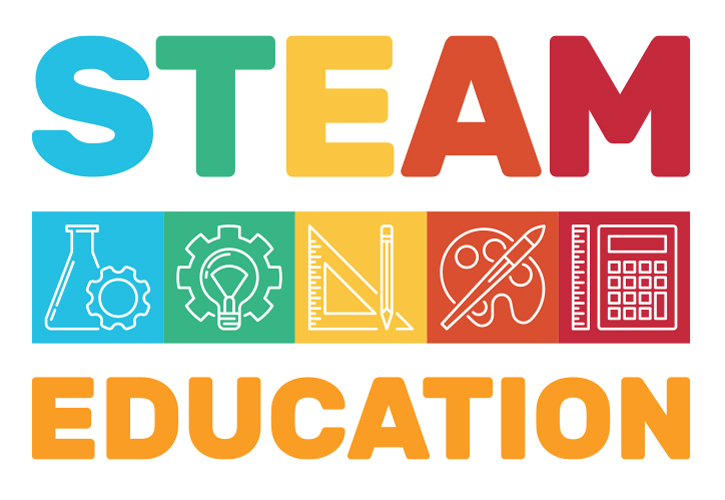Integrated Science, Technology, Engineering, Arts, and Mathematics (STEAM) education has received international attention through the media, policy-makers, and professional organizations such as National Science Teachers Association and the National Council
of Teachers of Mathematics as a way to engage students in authentic and transdisciplinary problem-solving.
In our work with schools and districts developing integrated STEAM infrastructures, we have found that STEAM instruction can deepen students’ mathematics and science learning, serve as an avenue to engage each and every student, and expose students
to STEAM careers. As educators, we must develop pedagogical strategies and frameworks that best engage students, prepare them for the careers of tomorrow, and equip them with skills and knowledge to solve problems and improve lives.
"Integrated STEAM instruction should provide a place whereby students can take a deeper dive into integrated content and problem-solve across these disciplinary boundaries..."
We contend STEAM education is for every student in every school. It does not seek to replace content being taught in any discipline. That is, science, mathematics, art—and all of the disciplines that comprise STEAM should still be given time and
space in a typical school day. Instead, integrated STEAM instruction should provide a place whereby students can take a deeper dive into integrated content and problem-solve across and beyond these disciplinary boundaries as that is where the most
innovative problem-solving occurs. As described in Step into STEAM: Your Standards-Based Action Plan for Deepening Mathematics and Science Learning, our vision of K-12 STEAM education centers on the 3 E’s: Equity, Empathy, and Experience.

Equity
Equity focuses on providing access to STEAM education. STEAM is not for just students perceived as advanced or after school programming or summer camp experiences only available to those who can attend. Reform-based practices in mathematics and science
education call for increasing access to high quality instruction for each and every student. Through this lens on equitable access, integrated STEAM education provides a context for mathematics and science reform teaching practices to be realized
in ways in which student strengths are highlighted and maximized. In planning for STEAM in response to the calls for access and equity, teachers and instructional leaders should ask themselves:
- Who is engaged in instruction and who is not?
- What barriers are there to learning?
- How could we as educators and administrators remove those barriers to provide access to each and every student?
- In what ways can we identify unique needs for each and every student and use that information to deepen and extend each students’ learning?
Empathy
Empathy plays a key role in engaging students in STEAM learning. When inquiries are designed to begin by allowing students to experience the conditions within which another exists, students become passionate about helping another. This enthusiasm often
provides the impetus for their engagement throughout the inquiry. As we have learned from the Design Thinking framework, empathy is the first step in a process in which students develop solutions to ill-defined and authentic problems. In planning
for STEAM in response to the focus on building empathy, teachers and instructional leaders should ask themselves:
- How do our classroom experiences in STEAM become meaningful and purposeful?
- How do we create STEAM experiences which aim to improve life for others?
- How do we go about identifying problems to solve?
Experience
Experience in STEAM education is unique. When students are engaged in STEAM learning, they are engaged in learning that transcends the STEAM disciplines. They use key mathematics and science content and practices to solve real-world problems for which
solutions are undetermined. The STEAM experience is highly individualized and student-centered, allowing students to bring their innovative ideas and unique selves to solving problems under investigation. During these experiences, students are guided
by knowledgeable others, which may include a variety of teachers and other stakeholders that assist them in deep explorations. In planning STEAM experiences, teachers and instructional leaders should ask themselves:
- In what ways do key science and mathematics content and practices connect with my students’ lived experiences?
- What societal and community issues are relevant to students?
- Who in my community would be interested in student ideas about this topic?
The 3 E’s and accompanying questions will assist you in establishing STEAM learning infrastructures that will aim to foster students as change agents who use their transdisciplinary understanding of the STEAM disciplines to improve life for
others.
Learn more about Bellarmine's STEAM education program.
Dr. Sarah B. Bush is an associate professor of K–12 STEM education and program coordinator of the mathematics education PhD track at the University of Central Florida in Orlando, Florida.
Dr. Kristin Cook is an associate professor of science education at Bellarmine University and serves as the associate dean of the School of Education